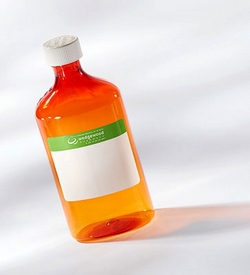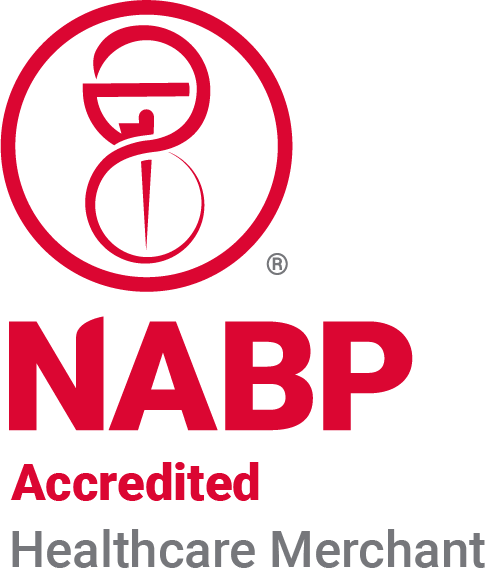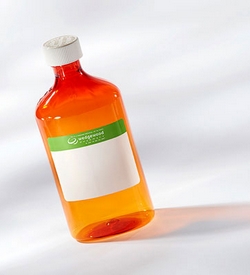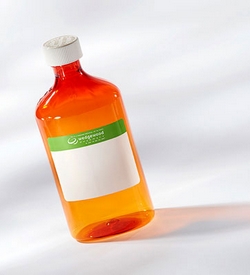Free Delivery on $50+*
Providing Quality & Trust
Theophylline Oral Suspension
Wedgewood Pharmacy
Starting at $116.00
$116.00 Each
Detailed Description
THEOPHYLLINE: ORAL SUSPENSION

Theophylline may be prescribed for
- Myocardial Failure
- Cardiogenic Pulmonary Edema
- Bronchospasm
One of the dosage forms available for Theophylline is Oral Suspension. Wedgewood Pharmacy’s oral suspensions and solutions are a familiar and convenient dosage form. Oral suspensions and solutions can be administered directly into the mouth using a dosing syringe or mixed with a small amount of food. They offer a wide range of flavoring options, and flexible dosing adjustments.
38 strengths of Theophylline Oral Suspension are available, ranging from 10 mg/ml to 200 mg/ml.
Prescribed For: Dogs and Cats
May be Prescribed For: Myocardial Failure, Cardiogenic Pulmonary Edema and Bronchospasm
Basic Information
Theophylline is a bronchodilator that is prescribed by veterinarians to help relax the muscles in a patient's lungs and chest so she can breathe easier. It also is commonly used to treat a wide range of pulmonary disorders, such as pulmonary edema, bronchial asthma, and chronic obstructive pulmonary disease, and in rarer cases, heart failure. Theophylline is available in both an oral and an injectable form. It is very well-absorbed after oral administration.
Veterinary Medicine Uses for Theophylline
Theophylline is very effective at relaxing the muscles surrounding the airway and clearing out the mucus that can make breathing more difficult. It helps clear out mucus build-up by increasing the movement of cilia within the airway.
Theophylline also works to strengthen the patient's diaphragm, and this is integral in improving the patient's ability to breathe. Theophylline not only helps the patient breathe easier, but it also helps prevent future breathing constrictions. The drug is structurally similar to caffeine, which works as a central nervous system stimulant.
Theophylline is used in feline asthma and in chronic bronchitis in dogs. Theophylline can be used with corticosteroids and may allow using a lower dose of the corticosteroid. Like many other drugs in veterinary medicine, this drug is not FDA-approved for use in animals and is not available from a veterinary pharmaceutical manufacturer. Instead, it is compounded by a compounding pharmacy.
Potential Side-Effects of Theophylline
Theophylline is appropriate for use on cats and dogs when it is administered under the guidance of a veterinarian. However, the patient can still experience side effects with this drug. Most commonly, the side effects of Theophylline include central nervous system excitement, vomiting, fever, rash, and heart palpitations. In most cases, the side effects can be managed through dosage adjustments, and this will usually cause them to gradually subside over time.
However, if the patient experiences prolonged vomiting or diarrhea, or she develops hives or other signs of an allergic reaction, then she should be taken to the veterinarian as soon as possible.
Many of the milder side-effects occur at the start of therapy but will resolve over time. Some clinicians will start an animal on a lower dose and increase the theophylline to the therapeutic dose after the first week.
Less-common but more-serious side effects include abnormal heart rhythm and seizures. Be sure to discuss any side-effects with your veterinarian immediately.
Drug Interactions with Theophylline
Theophylline has known interactions with several different drug classes, including certain antiarrhythmics, anti-seizure drugs, certain beta-blockers, as well as cimetidine, digoxin, disulfiram, fluvoxamine, interferon, isoproterenol, and many others.
There are a number of other possible drug interactions with theophylline, including: Allopurinal, beta-blockers, propanolol, cimetidine, calcium channel blockers, corticosteroids, thiabendazole, exogenous thyroid hormone, macrolide antibiotics, flouroquinolones antibiotics, barbiturates, rifampin, carbamazine, charcoal, phenytoin, ketoconazole, beta-agonists, lithium, pancuronium, propofol, isoniazid, furosemide, ephedrine, isoproterenol, halothane, and ketamine.
Precautions for Using Theophylline
Although Theophylline has been shown to be appropriate for use in veterinary medicine, the drug should be used with extreme caution in some patients. Theophylline should be used with care in patients that have been diagnosed with kidney disease, liver disease, heart disease, stomach ulcers, hyperthyroidism, or hypertension. The drug should not be prescribed to pregnant or lactating patients or horses. It should be used with more caution in animals with abnormal heart rhythm, and in those with a history of seizures.
Keep this and all drugs out of reach of children. This drug should only be given to the animal for which it was prescribed. Do not give this medication to a person. Federal law restricts this drug to use by or on the order of a licensed veterinarian.
Very young and very old animals may metabolize this drug more slowly.
Different strengths or dosage forms of theophylline can have different storage requirements. Read the labeling or ask your pharmacist for the storage requirements of the prescription you receive.
Dosage and Administration of Theophylline
The dosage and administration of Theophylline varies according to the size and breed of the pet being treated, and the type and severity of their illness, but typically, the drug is taken every 6, 8, 12, or 24 hours. The drug works best when it is taken on an empty stomach and at least an hour before or two hours after eating. It can be stored at room temperature, but should be kept away from light, heat, and moisture.
Theophylline is available in a range of formulations, including tablet, capsule, and oral liquid. It is extremely important to administer the medication exactly as prescribed by the veterinarian. When administering Theophylline in tablet form, the tablet needs to be swallowed whole, not chewed.
Give this medication to your pet exactly as your veterinarian prescribes. If you miss giving your pet a dose of theophylline, give the next dose as soon as you remember or, if it is close to the next scheduled dose, return to the regular schedule. Do not double dose to catch up.
Due to the way this drug is metabolized, the dose for your pet will be calculated based on their ideal or lean body weight.
Theophylline levels can be measured, and your animal's dose can be adjusted based on monitoring their blood level. Wash your hands after giving your pet this medication.
If you suspect your pet or another animal was overdosed accidentally or has eaten this medication inadvertently, contact your veterinarian or the A.S.P.C.A.'s Animal Poison Control Center at 888.426.4435. Always bring the prescription container with you when you take your pet for treatment.
If you or someone else has accidentally ingested this medication call the National Capital Poison Center at 800.222.1222.

Powered by nopCommerce
This site is running in live payment mode. Real payments will be processed.

